Geothermal Heat Pumps
Stay Cool with the Best Air Conditioning Unit Choices

When the temperatures outside begin to rise, it can get uncomfortable in a hurry. Diving into a pool or sitting in the shade can help you escape the heat outdoors, but you will likely also need an air conditioning system indoors if you want to avoid sweating in the sweltering weather. Before selecting an air conditioner for your home, it’s important to understand the different types available and consider factors like cost, installation, and efficiency.
Key Takeaways:
- Choose the right air conditioning unit based on your budget, home size, and existing ductwork.
- Central air conditioners provide whole-home cooling but come with a higher upfront cost.
- Window air conditioners are cost-effective for cooling individual rooms, but they can be noisy and obstruct windows.
- Portable air conditioners offer flexibility but may not provide as much cooling as claimed.
- Ductless mini-split systems are energy-efficient but have a higher installation cost and may not be suitable for large rooms or whole homes.
Central Air Conditioners: Cooling the Whole Home Efficiently
Central air conditioners are a popular choice for homeowners looking to cool their entire home efficiently. These systems work by distributing cool air through ducts and out through vents, providing consistent and even cooling throughout the entire house. With central air conditioning, you can set a desired temperature using a thermostat and enjoy the comfort of a cool home even during the hottest summer months.
One of the advantages of central air conditioning systems is their smart capabilities. Many modern central air units are equipped with smart technology, allowing you to control and monitor your cooling system remotely. You can adjust the temperature, set schedules, and even receive energy usage reports from your smartphone or other connected devices. This level of control and convenience makes central air conditioners a popular choice for homeowners who value flexibility and efficiency.
While central air conditioners provide efficient cooling for the whole home, it’s important to consider the cost. The initial purchase and installation cost of a central air conditioning system can be higher compared to other types of air conditioners. Typically, the average cost ranges from $4,000 to $8,000, depending on factors such as the size of your home, the complexity of the installation, and any additional features you choose. However, many homeowners find that the long-term benefits and comfort provided by central air conditioning make it a worthwhile investment.
| Advantages of Central Air Conditioners | Considerations for Central Air Conditioners |
|---|---|
|
|
Central Air Conditioners: Cooling the Whole Home Efficiently
“Central air conditioners provide efficient cooling for the whole home and offer smart capabilities for remote control and monitoring.”
When considering central air conditioning for your home, it’s important to consult with a professional to determine the right size and capacity for your specific needs. Factors such as the size of your home, insulation, and local climate will play a role in determining the appropriate system. Additionally, regular maintenance and servicing are essential to keep your central air conditioning system running efficiently and to ensure optimal performance.
Overall, central air conditioners are an excellent choice for homeowners looking to cool their entire home efficiently. With their ability to provide consistent and even cooling, smart capabilities, and customizable temperature settings, central air conditioning systems offer a high level of comfort and convenience. While the initial cost may be higher, the long-term benefits and comfort make central air conditioners a worthwhile investment for many homeowners.
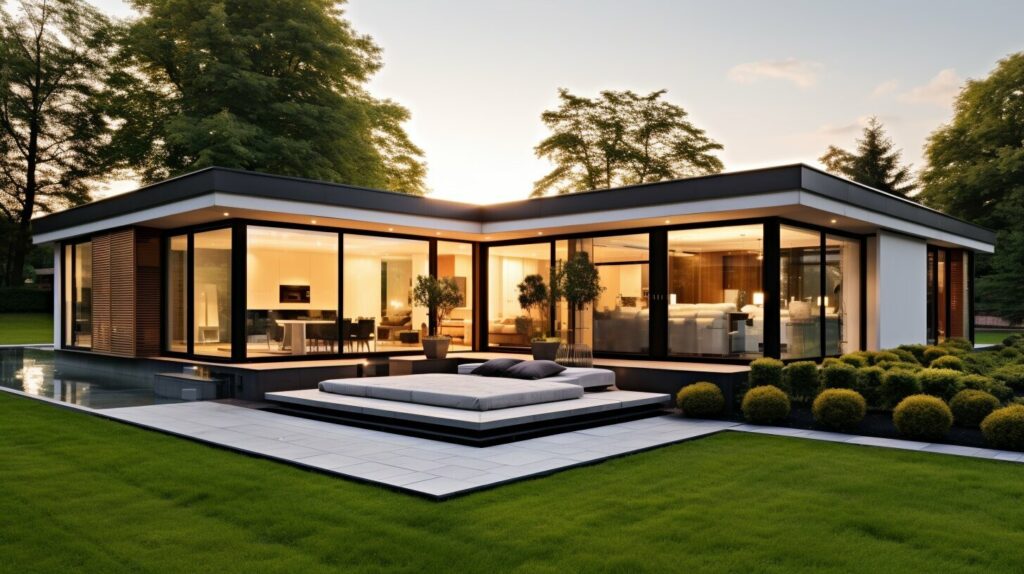
Window Air Conditioners: Cost-Effective Cooling for Individual Rooms
When it comes to cooling individual rooms or smaller spaces, window air conditioners are a cost-effective option. These units are designed to be installed in a window, allowing them to release condensation and heat outside while blowing cool air into the room. Not only are window air conditioners relatively easy to install, but they also save valuable floor space, making them a popular choice for apartments and smaller homes.
One of the advantages of window air conditioners is their affordability. With prices ranging from $100 to $1,100 for both the purchase and installation, they provide a budget-friendly cooling solution. Additionally, these units often come with a remote control, allowing you to conveniently adjust the settings from across the room.
However, it’s important to consider a few factors when choosing a window air conditioner. While they can effectively cool a single room, they may not be suitable for larger areas or open floor plans. Additionally, window air conditioners can obstruct the window, limiting natural light and views. Noise during operation can also be an issue, especially for light sleepers or those who prefer a quieter environment. Lastly, proper installation is crucial to ensure safety and efficient performance.
Advantages of Window Air Conditioners:
- Cost-effective cooling option
- Easy installation
- Saves floor space
- Remote control for convenience
Considerations for Window Air Conditioners:
- May not be suitable for larger rooms or open floor plans
- Obstructs the window
- Noise during operation
- Proper installation is crucial
Despite these considerations, window air conditioners remain a popular choice for those looking for an affordable and convenient cooling solution for individual rooms or small spaces. By weighing the advantages and considering the limitations, you can make an informed decision that best suits your needs and preferences.
| Advantages | Considerations |
|---|---|
| Cost-effective | May not be suitable for larger rooms or open floor plans |
| Easy installation | Obstructs the window |
| Saves floor space | Noise during operation |
| Convenient remote control | Proper installation is crucial |

Portable Air Conditioners: Flexibility and Convenience
When it comes to staying cool during hot summer months, portable air conditioners offer a convenient solution. These units are designed for easy installation and can be moved from room to room, providing cooling wherever you need it. Whether you live in an apartment, condo, or small home, a portable air conditioner can help you beat the heat without the need for a permanent cooling system.
One of the key advantages of portable air conditioners is their easy installation process. Unlike central air systems or ductless mini-split systems that require professional installation, portable units can be set up by simply venting the exhaust hose through a window. This makes them a popular choice for renters or those who don’t want to invest in a more complex cooling system.
Another benefit of portable air conditioners is their ability to save on floor space. Unlike window air conditioners, which require a window to be fully obstructed, portable units can be placed anywhere in the room as long as there is access to an electrical outlet and a window for venting. This flexibility allows you to cool specific areas or multiple rooms without sacrificing valuable floor space.
Table: Comparison of Portable Air Conditioners
| Product | Easy Installation | Floor Space | Noisy Operation | Price Range |
|---|---|---|---|---|
| Model A | Yes | Compact | No | $200 – $300 |
| Model B | Yes | Small | Yes | $300 – $400 |
| Model C | Yes | Medium | Yes | $400 – $500 |
However, it’s important to note that portable air conditioners can be noisy during operation. The compressor and fan inside the unit generate noise, which may be distracting for some users. If you are sensitive to noise or plan to use the unit in a quiet space, it’s recommended to choose a model with a lower noise level or consider alternative cooling options.
When it comes to price, portable air conditioners are generally more affordable compared to central air systems or ductless mini-split systems. The cost ranges from $200 to $800, depending on the cooling capacity and features of the unit. It’s important to consider your budget and cooling needs when selecting a portable air conditioner.
Overall, portable air conditioners offer flexibility and convenience for cooling individual rooms or small spaces. With their easy installation process and ability to save on floor space, they are a popular choice for those who prioritize convenience and portability. However, it’s important to weigh the potential noise level and consider your budget before making a final decision.
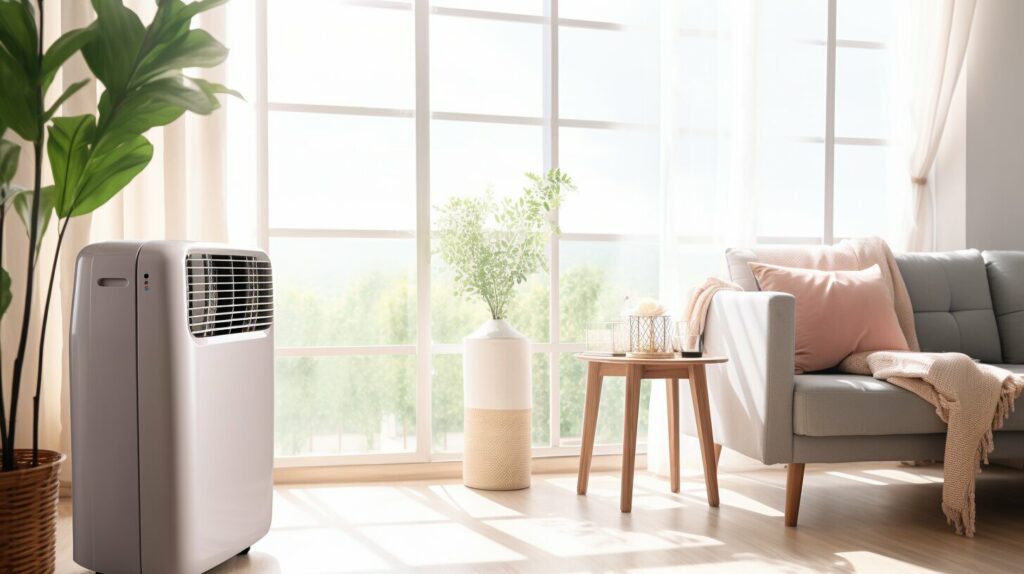
Source: Image by SeoWriting.ai
Ductless Mini-Split Systems: Cooling Without the Need for Ducts
When it comes to cooling your home without the need for ductwork, ductless mini-split systems offer a convenient solution. These systems consist of an outdoor condenser unit and compact blowers mounted on the walls inside your home. One of the main advantages of ductless mini-split systems is that they provide individual control, allowing you to adjust the temperature in each room to your preference. This can lead to increased energy savings, as you can avoid cooling rooms that are not in use.
Installation cost is an important consideration when choosing a ductless mini-split system. The cost can vary depending on factors such as the size of your home and the number of indoor units required. On average, installation costs range from $2,000 to $14,500. While the initial investment may be higher compared to other types of air conditioning units, the energy savings and individual control can make ductless mini-split systems a cost-effective choice in the long run.
Another benefit of ductless mini-split systems is their energy efficiency. These systems often have higher SEER (Seasonal Energy Efficiency Ratio) ratings compared to other air conditioning units. The SEER rating indicates how efficiently the system converts electricity into cooling power. By opting for a ductless mini-split system with a high SEER rating, you can lower your energy costs and reduce your environmental impact.
Table: Comparison of Air Conditioning Unit Costs
| Unit Type | Installation Cost | Individual Control | Energy Efficiency |
|---|---|---|---|
| Ductless Mini-Split | $2,000 – $14,500 | Yes | High |
| Central Air | $4,000 – $8,000 | No | High |
| Window Unit | $100 – $1,100 | No | Medium |
| Portable Unit | $200 – $800 | No | Medium |
Overall, ductless mini-split systems offer flexibility, energy efficiency, and individual control. However, they may not be suitable for cooling large rooms or whole homes, as they are designed for targeted cooling. It’s important to consult with a professional to assess your specific cooling needs and determine if a ductless mini-split system is the right choice for your home.
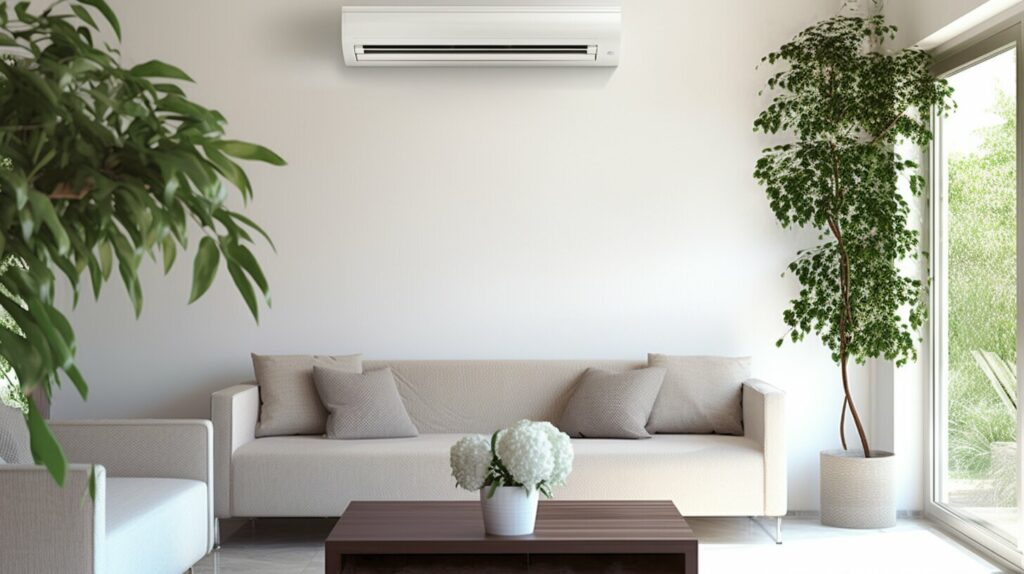
Which Air Conditioning Unit is Right for You?
Choosing the right air conditioning unit for your home depends on several factors, including your budget, the size of your home, and whether or not you have existing ductwork. Let’s take a closer look at the different options available:
Window Units
Window air conditioners are a popular choice for those looking for an affordable and easy-to-install cooling solution. These units are designed to cool individual rooms and are particularly suitable for smaller spaces. However, it’s important to consider that window units can obstruct your window and may not provide enough cooling for larger rooms or open floor plans.
Portable Units
If you’re looking for flexibility and convenience, portable air conditioners might be the right option for you. These units can be easily moved from room to room and don’t require permanent installation. They are especially suitable for apartments, condos, and small homes. Keep in mind that portable units can take up floor space and may be noisy during operation.
Ductless Mini-Split Systems
Ductless mini-split systems are an excellent choice if you don’t have existing ductwork or if you want to cool specific areas of your home. These systems consist of an outdoor condenser unit and compact blowers mounted on walls inside the home. They provide individual control and are more energy-efficient compared to other options. However, ductless mini-split systems come with a higher installation cost and may not be suitable for cooling large rooms or whole homes.
Central Air Systems
If you’re looking for comprehensive cooling for your entire home, central air systems are the way to go. These systems distribute cool air through ducts and out through vents, effectively cooling every room. However, central air systems require existing ductwork and have a higher initial purchase and installation cost.
Consulting with a professional is crucial to determine the best air conditioning option for your specific needs. Consider factors such as your budget, home size, and cooling requirements to make an informed decision. With the right air conditioning unit in place, you can enjoy a cool and comfortable home, no matter how hot it gets outside.
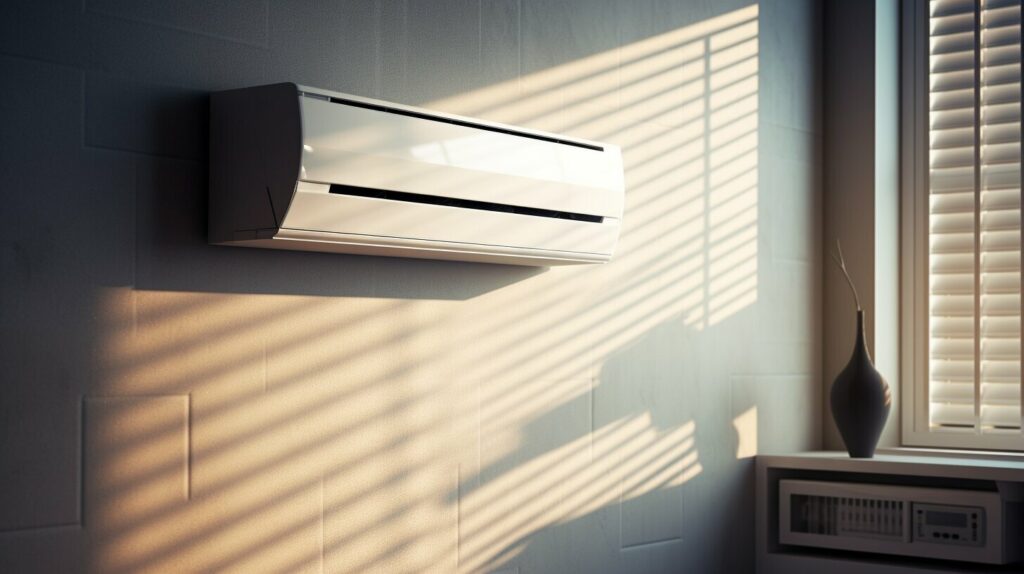
Tips for Choosing the Right Air Conditioning System
When it comes to selecting the right air conditioning system for your home, there are several factors to consider. These include the cost impacts, the type of home you have, and the maintenance requirements. By taking these factors into account, you can ensure that you choose an air conditioning system that meets your needs and provides optimal comfort.
Cost Impacts
The cost of an air conditioning system can vary significantly depending on the type of unit you choose. Window units are generally the most affordable option, while portable units and ductless mini-split systems fall in the mid-range in terms of cost. Central air systems tend to be the most expensive upfront, but they offer comprehensive cooling for the entire home. It’s important to consider your budget and long-term savings when determining which system is the best fit for you.
Home Type
The type of home you have can also impact your air conditioning system choice. For example, if you live in a small apartment or have limited floor space, a portable air conditioner may be the most practical option. On the other hand, if you have existing ductwork and want to cool the entire home, a central air system could be the ideal choice. Consider the layout and size of your home when making your decision.
Maintenance
Maintaining your air conditioning system is essential for long-term performance and energy efficiency. Different types of systems have varying maintenance requirements. Window units and portable air conditioners often require more frequent filter cleaning or replacement, while central air systems may require professional maintenance and duct cleaning. Be sure to factor in the time and effort you’re willing to invest in maintaining your chosen system.
By considering the cost impacts, the type of home you have, and the maintenance requirements, you can make an informed decision when choosing an air conditioning system. Whether it’s a window unit, portable unit, ductless mini-split system, or central air system, selecting the right option for your specific needs will ensure optimal cooling and home comfort.
Conclusion
We understand the importance of staying cool and comfortable in your home, especially during the hot summer months. That’s why it’s essential to choose the right air conditioning option for your specific needs. With a wide range of air conditioning units available, including central air systems, window units, portable units, and ductless mini-split systems, there is a solution for every home.
When considering your air conditioning options, it’s important to prioritize home comfort. Whether you opt for a central air system that cools your entire home efficiently or a window unit that provides cost-effective cooling for individual rooms, the goal is to create a comfortable living environment for you and your loved ones.
Professional installation is key to ensuring the optimal performance of your air conditioning system. By consulting with a professional, you can determine the right unit size, placement, and installation method for your home. This will help you avoid costly mistakes and maximize the efficiency of your chosen system.
Remember, regular maintenance is crucial to keep your air conditioning system running smoothly. By scheduling professional maintenance, you can keep your system in top shape, improve energy efficiency, and extend its lifespan. So, invest in your home comfort and enjoy the benefits of a reliable air conditioning system throughout the year.
How Can Improving Indoor Air Quality Help with Cooling Your Space?
Improving indoor air quality plays a significant role in cooling your space effectively. By boosting indoor air quality, you ensure that the air circulating in your environment is clean and fresh, allowing for better cooling efficiency. Clean air reduces the strain on cooling systems, promoting their longevity and optimizing their performance. Additionally, enhanced air quality prevents dust and pollutants from accumulating, helping your space stay cool and comfortable.
FAQ
What type of air conditioning unit is best for cooling the entire home?
Central air conditioners are designed to cool the entire home efficiently by distributing cool air through ducts and vents.
Are portable air conditioners suitable for large homes?
Portable air conditioners are more suitable for apartments, condos, and small homes as they may not provide sufficient cooling for larger spaces.
Do window air conditioners obstruct windows?
Yes, window air conditioners are installed in windows and can obstruct the view and natural light.
Are ductless mini-split systems energy-efficient?
Yes, ductless mini-split systems are energy-efficient compared to other systems and allow for individual control of cooling in specific areas of the home.
Do central air systems require existing ductwork?
Yes, central air systems require existing ductwork in the home for proper installation and distribution of cool air.
How much does it cost to install a central air conditioner?
The average cost of installing a central air conditioner ranges from $4,000 to $8,000.
Are portable air conditioners noisy?
Portable air conditioners can be noisy during operation, so it’s important to consider this factor before purchasing.
What is the cost range for window air conditioners?
The cost of window air conditioners ranges from $100 to $1,100, including purchase and installation.
Can portable air conditioners be easily moved from room to room?
Yes, portable air conditioners are designed to be easily moved from one room to another for flexible cooling.
Are ductless mini-split systems suitable for homes without existing ductwork?
Yes, ductless mini-split systems are ideal for homes without existing ductwork or for cooling specific areas of the home.
How much does it cost to install a ductless mini-split system?
The installation cost of a ductless mini-split system ranges from $2,000 to $14,500 depending on factors such as the number of units and the size of the home.
Geothermal Heat Pumps
How to Boost Heat Pump Efficiency With Renewables

Think about a scenario in which our heat pumps operate more efficiently, not harder. With renewable energy readily available, we can maximize the capabilities of these systems.
In this article, we will delve into the realm of heat pump efficiency and explore how renewables can take it to new heights. From solar power to geothermal energy, wind power to biomass, we will uncover the secrets to maximizing performance and achieving sustainable mastery of our heat pumps.
Let’s embark on this journey together.
Key Takeaways
- Solar power and geothermal energy are excellent renewable energy sources for boosting heat pump efficiency.
- Incorporating solar power through the use of solar panels can reduce reliance on traditional electricity sources and lower carbon footprint.
- Geothermal heating systems utilize the constant temperature of the Earth to transfer heat between the ground and the heat pump, resulting in energy savings and reduced environmental impact.
- Wind power and biomass energy can also be integrated with heat pump systems to enhance efficiency and promote sustainability.
Understanding the Role of Renewable Energy in Heat Pump Efficiency
We can enhance the efficiency of heat pumps by utilizing renewable energy sources. Renewable energy integration plays a crucial role in optimizing the performance of heat pumps. When selecting an energy source for heat pumps, it’s important to consider various factors such as availability, cost, and environmental impact.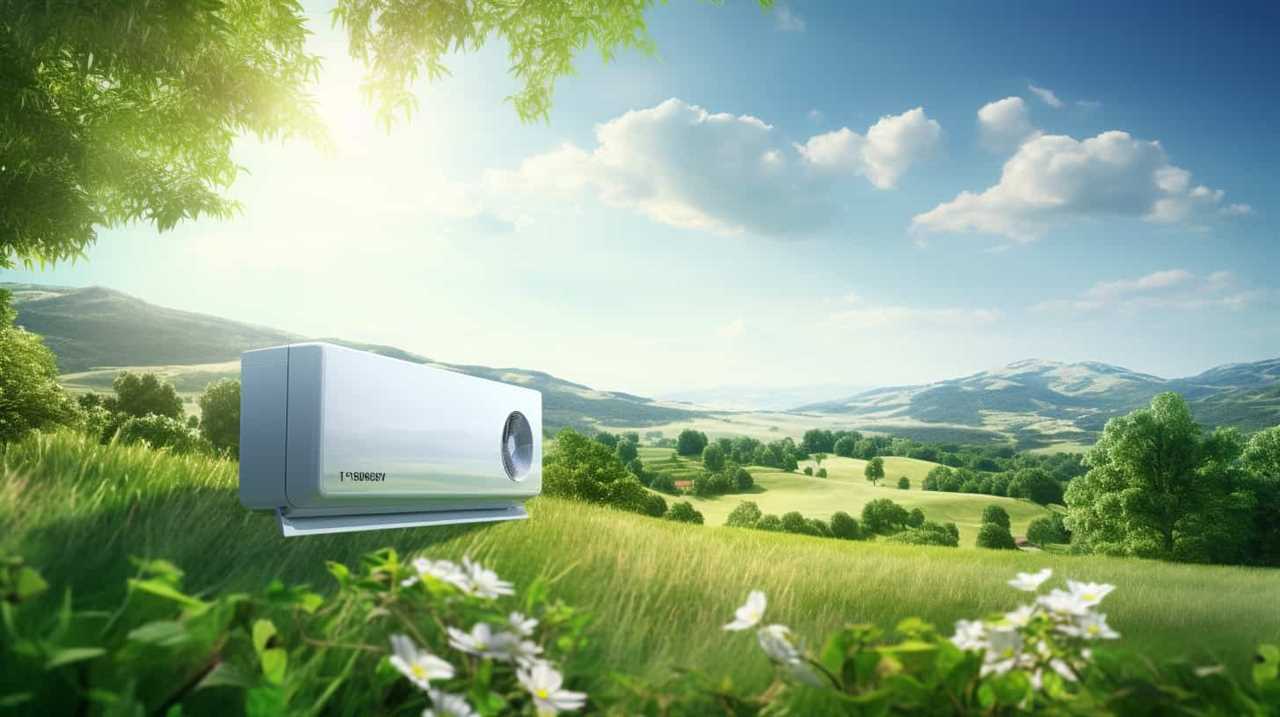
Solar energy is a popular choice for renewable energy integration due to its abundance and low carbon emissions. By harnessing the power of the sun, heat pumps can operate more efficiently and reduce reliance on conventional energy sources.
Another option is geothermal energy, which utilizes the heat from the Earth’s core to provide heating and cooling. Geothermal systems can significantly improve the efficiency of heat pumps, especially in regions with stable ground temperatures.
Carefully evaluating energy source options is essential for maximizing the efficiency of heat pumps and reducing their carbon footprint.
Evaluating the Benefits of Solar Power for Heat Pump Performance
By evaluating the benefits of solar power, we can determine its impact on heat pump performance. When considering solar power for heat pump performance, there are several key advantages to take into account:
Solar panel installation: Installing solar panels allows you to generate clean and renewable energy directly from the sun. This reduces your reliance on traditional electricity sources and helps lower your carbon footprint.
Photovoltaic technology: Solar panels use photovoltaic technology to convert sunlight into electricity. This means that the energy generated can be used to power your heat pump, reducing the amount of electricity you need to draw from the grid.
Increased efficiency: Pairing solar power with your heat pump can increase its overall efficiency. By utilizing the free and abundant energy from the sun, your heat pump can operate more efficiently, leading to energy savings and lower utility bills.
Incorporating solar power into your heat pump system can have a significant impact on its performance and efficiency. With solar panel installation and the use of photovoltaic technology, you can maximize the benefits of renewable energy for your heat pump.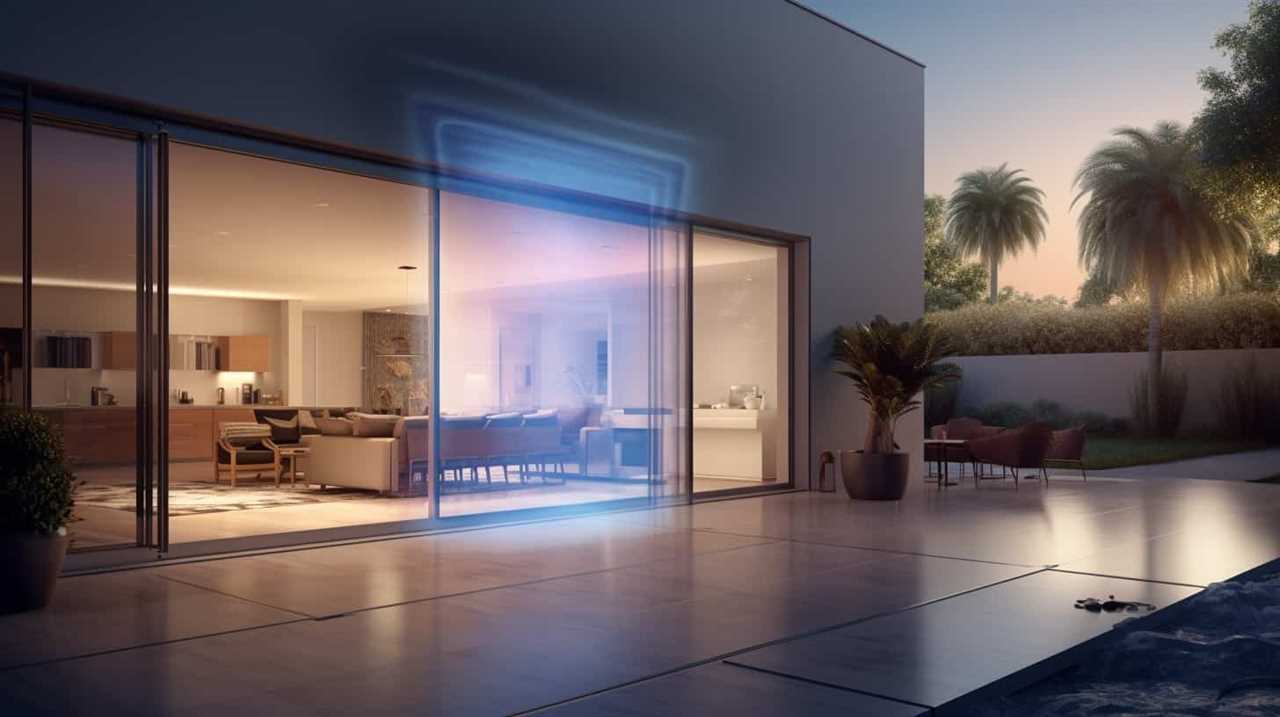
Harnessing Geothermal Energy to Enhance Heat Pump Efficiency
One way to enhance heat pump efficiency is by harnessing geothermal energy. Geothermal heating systems utilize the constant temperature of the earth to provide heating and cooling for residential and commercial buildings. These systems rely on a process called geothermal heat exchange, where heat is transferred between the ground and the heat pump.
The ground acts as a heat source during the winter months, while in the summer it acts as a heat sink. By tapping into this renewable energy source, heat pumps can achieve higher levels of efficiency compared to traditional heating and cooling methods.
Geothermal systems require a well-designed and properly installed ground loop system to effectively transfer heat. It’s essential to consider factors such as soil composition, sizing, and layout to optimize system performance.
With the integration of geothermal energy, heat pumps can operate more efficiently, resulting in significant energy savings and reduced environmental impact.
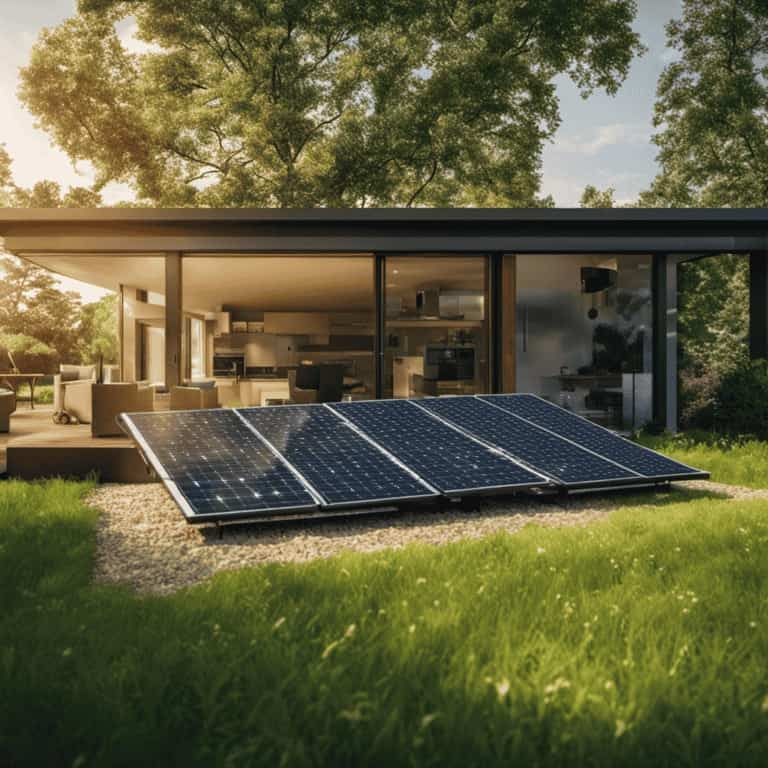
Maximizing Wind Power to Optimize Heat Pump Operation
To optimize heat pump operation, we can maximize wind power through the use of wind turbines. Incorporating wind power integration and wind energy optimization can significantly enhance the efficiency of heat pumps.
Here are three ways to maximize wind power for optimal heat pump operation:
Install on-site wind turbines to generate electricity directly for the heat pump system.
Utilize grid-connected wind power by sourcing electricity from wind farms.
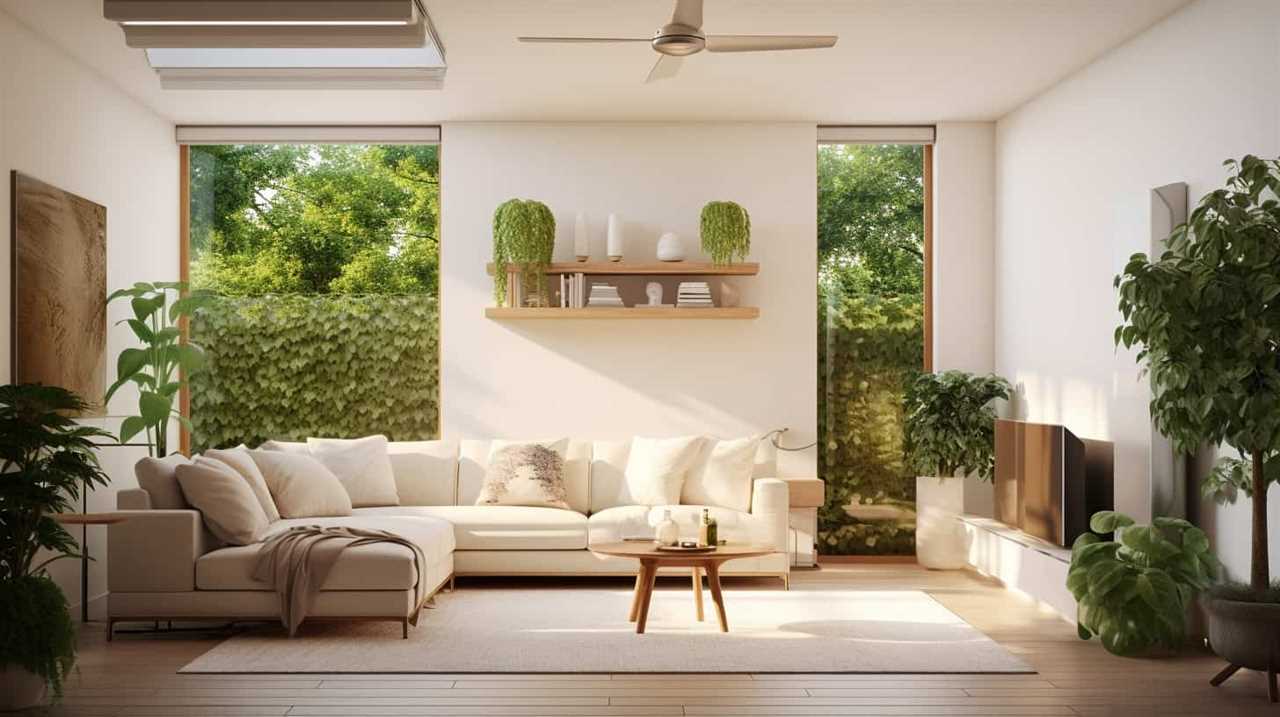
Implement smart controls and energy management systems to synchronize heat pump operation with wind power availability.
By integrating wind power into heat pump systems, we can reduce the reliance on traditional energy sources and decrease carbon emissions. Wind power offers a sustainable and renewable energy solution that aligns with the goal of achieving maximum heat pump efficiency.
Now, let’s explore another renewable energy source, biomass, to further enhance the efficiency of heat pump systems.
Exploring Biomass Energy for Sustainable Heat Pump Efficiency
Our exploration of biomass energy reveals its potential for enhancing the efficiency of heat pump systems.
Biomass sustainability refers to the use of organic materials, such as wood pellets, agricultural waste, or dedicated energy crops, to generate heat. By utilizing biomass as a renewable fuel source, heat pumps can achieve carbon neutral heating, significantly reducing greenhouse gas emissions.
Biomass sustainability ensures that the materials used for fuel are replaced or regenerated at a rate equal to or faster than their consumption. This practice not only minimizes environmental impact but also ensures long-term availability of biomass resources.
Integrating biomass energy with heat pump systems offers a sustainable solution for efficient heating, providing an environmentally friendly alternative to fossil fuel-based heating methods.
Frequently Asked Questions
Can Heat Pumps Only Be Powered by Renewable Energy Sources?
Heat pumps can be powered by a variety of energy sources, including renewable ones. By utilizing renewable energy sources, such as solar or geothermal, heat pump efficiency can be boosted, reducing reliance on non-renewable fuels.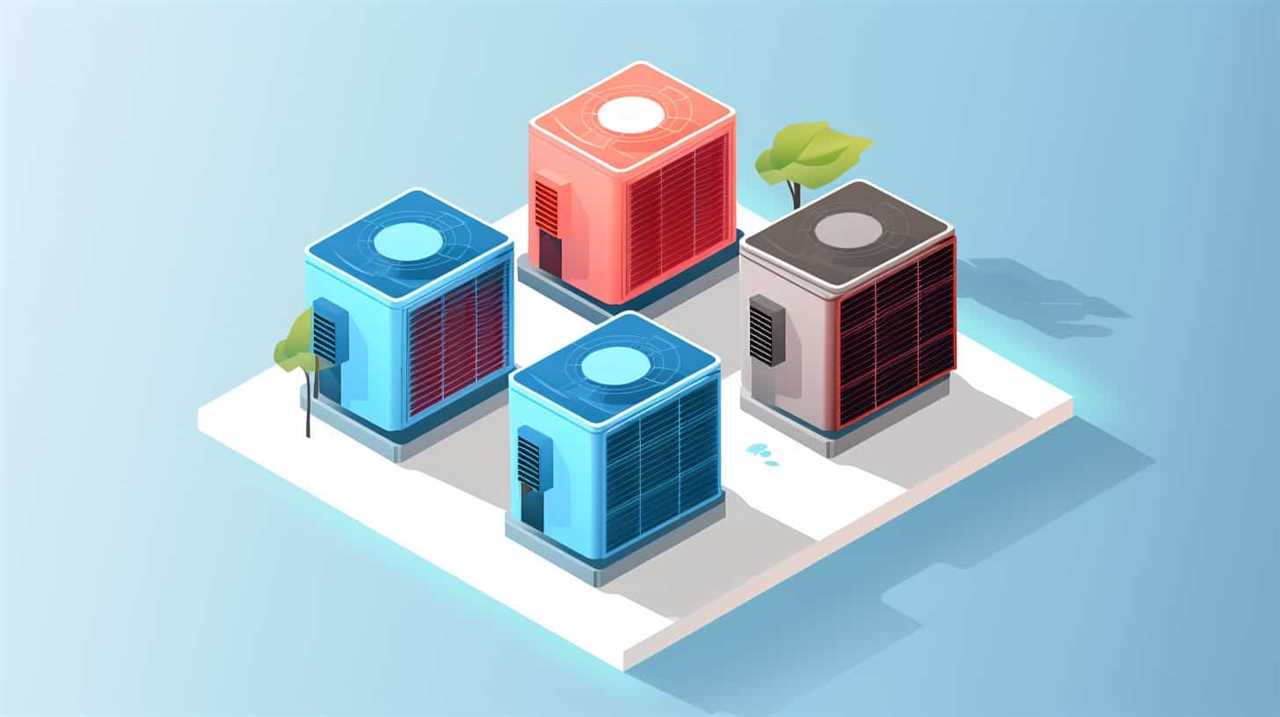
What Are the Main Advantages of Using Solar Power in Conjunction With a Heat Pump?
The advantages of using solar power in conjunction with a heat pump include increased energy efficiency, reduced reliance on fossil fuels, and lower carbon emissions. Solar power can significantly boost heat pump efficiency and contribute to a more sustainable and environmentally friendly heating system.
How Does Geothermal Energy Specifically Improve the Efficiency of Heat Pumps?
Geothermal energy is a game-changer when it comes to boosting heat pump efficiency. It harnesses the Earth’s natural heat, providing a constant and renewable source of energy. This translates to improved performance and lower energy costs.
Is Wind Power a Viable Option for Powering Heat Pumps in All Locations?
Wind power has limitations as an alternative energy source for heat pumps in certain locations. However, there are other renewables, such as solar and geothermal energy, that can be more viable options to boost heat pump efficiency.
What Are the Environmental Benefits of Using Biomass Energy in Heat Pump Systems?
Using biomass energy in heat pump systems provides several environmental benefits. It enhances efficiency by utilizing renewable energy sources. This reduces greenhouse gas emissions and dependence on fossil fuels, contributing to a cleaner and sustainable energy future.
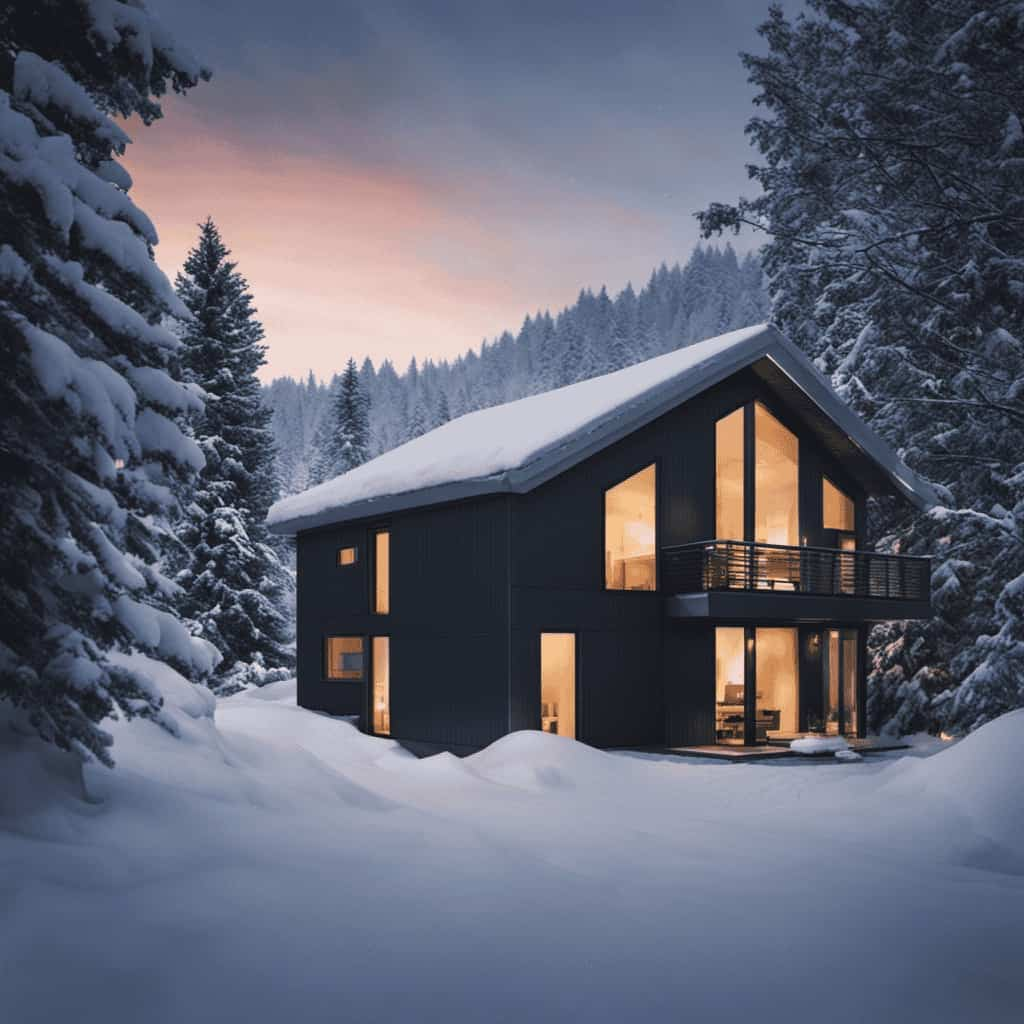
Can Using Renewables Help Pay for an Energy-Efficient Heat Pump?
Using renewables can definitely help pay for energy-efficient heat pumps. By harnessing natural sources like sunlight and wind, renewable energy can power these heat pumps, thus reducing electricity costs. Additionally, governments often offer incentives and tax credits for using renewables, which can further offset the initial investment of installing energy-efficient heat pumps. This makes them a cost-effective and sustainable option for heating and cooling.
Conclusion
In conclusion, by harnessing the power of renewables such as solar, geothermal, wind, and biomass energy, we can unlock the full potential of heat pump efficiency.
Like a symphony of nature’s elements, these renewable sources harmonize with our heat pumps, maximizing their performance and sustainability.
With each renewable energy source playing its unique role, we can create a rhythm of efficiency that flows seamlessly, providing us with a practical and environmentally friendly solution for heating and cooling our spaces.
Geothermal Heat Pumps
Transforming Homes With High-Efficiency HVAC and Heat Pump Systems

Picture a world where our houses are more than just places to stay, but rather sanctuaries of comfort and efficiency. By using high-efficiency HVAC and heat pump systems, we can turn our homes into energy-saving machines, giving us the best heating and cooling possible.
In this article, we will explore the benefits of these innovative systems, understand the technology behind heat pumps, and discover how upgrading our HVAC systems can bring us improved comfort and liberation from high energy bills.
Key Takeaways
- High-efficiency HVAC and heat pump systems save money through energy efficiency.
- These systems improve indoor air quality by removing dust and allergens.
- They reduce carbon footprint by producing fewer greenhouse gas emissions.
- High-efficiency HVAC and heat pump systems provide optimal heating and cooling for homes, enhancing comfort and well-being in indoor environments.
The Benefits of High-Efficiency HVAC Systems
We love high-efficiency HVAC systems because they save us money and keep us comfortable. These systems bring a multitude of benefits to our homes, including improved indoor air quality and a reduced carbon footprint.
High-efficiency HVAC systems utilize advanced filtration technology to remove dust, allergens, and pollutants from the air, resulting in cleaner and healthier indoor environments. Additionally, these systems are designed to operate with maximum energy efficiency, consuming less energy and producing fewer greenhouse gas emissions.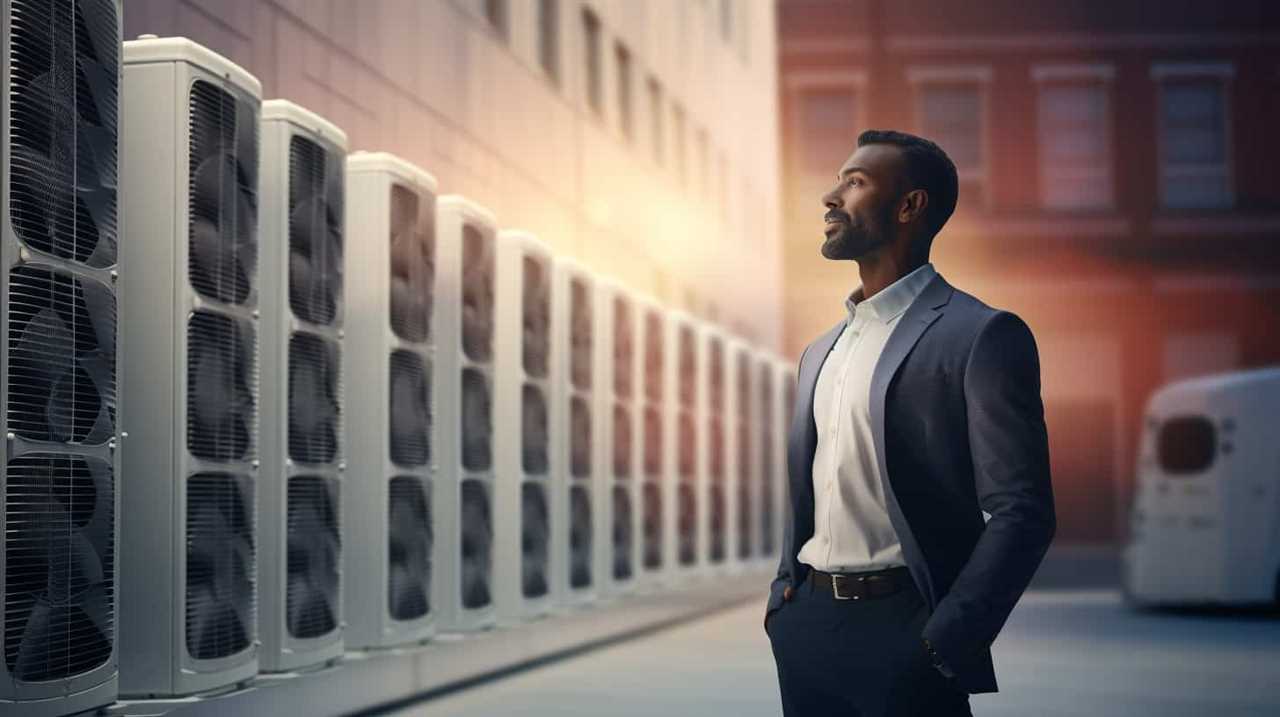
Understanding Heat Pump Technology for Home Heating and Cooling
To fully grasp the benefits of heat pump technology for home heating and cooling, it’s important to understand how these systems work and the advantages they offer. Heat pumps are highly efficient devices that transfer heat from one place to another, providing both heating and cooling for homes. Unlike traditional heating and cooling systems, which generate heat or cool air, heat pumps simply move heat from one location to another.
Heat pump efficiency is measured by the Coefficient of Performance (COP), which indicates the amount of heat produced for every unit of electricity consumed. Generally, high-efficiency heat pumps have a COP of 3 or higher, meaning they produce three units of heat for every unit of electricity consumed. This makes them significantly more energy-efficient than conventional heating systems.
Heat pump installation involves placing an outdoor unit, known as the condenser, and an indoor unit, called the evaporator, connected by refrigerant lines. The outdoor unit extracts heat from the air or ground and transfers it to the indoor unit, which then distributes it throughout the house.
Understanding the inner workings and benefits of heat pump technology sets the stage for discussing the energy savings that can be achieved with high-efficiency HVAC and heat pump systems.
Energy Savings With High-Efficiency HVAC and Heat Pump Systems
With high-efficiency HVAC and heat pump systems, significant energy savings can be achieved through improved efficiency and reduced electricity consumption. This not only leads to cost savings, but also has a positive environmental impact.
Here are two key ways in which these systems contribute to energy savings:
Enhanced Efficiency: High-efficiency HVAC and heat pump systems utilize advanced technologies, such as variable speed motors and smart thermostats, to optimize energy usage. These systems can adjust their output based on the actual heating or cooling needs of the home, resulting in reduced energy waste.
Reduced Electricity Consumption: High-efficiency HVAC and heat pump systems require less electricity to operate compared to traditional systems. This is due to their ability to transfer heat rather than generate it, resulting in lower energy consumption and decreased reliance on fossil fuels.

Upgrading Your Home’s HVAC System for Improved Comfort and Efficiency
Upgrading your home’s HVAC system can provide improved comfort and efficiency by incorporating modern technologies and energy-saving features. By investing in a high-efficiency HVAC system, you can significantly increase energy efficiency and reduce your carbon footprint.
These systems are designed to consume less energy while providing the same level of comfort in your home. They utilize advanced technologies such as variable-speed motors, smart thermostats, and zoning systems to optimize energy usage. Additionally, high-efficiency HVAC systems are equipped with features like programmable timers and sensors that allow you to control and customize your home’s temperature according to your needs. This not only enhances your comfort but also helps to reduce unnecessary energy consumption.
Upgrading your HVAC system is a smart move that not only improves your home’s comfort but also contributes to a greener and more sustainable future.
Choosing the Right High-Efficiency HVAC and Heat Pump System for Your Home
We can select the right high-efficiency HVAC and heat pump system for our home by considering our specific needs and evaluating the available options. Here are some important factors to consider:

Selecting the appropriate size for your HVAC and heat pump system:
Assess the size of your home and the heating and cooling load requirements.
Consult with HVAC professionals to determine the right size based on square footage, insulation, and climate conditions.
Understanding the maintenance requirements of high efficiency systems:

Regularly clean and replace air filters to ensure optimal performance and indoor air quality.
Schedule annual maintenance inspections by licensed professionals to detect any issues and keep the system running efficiently.
Frequently Asked Questions
How Often Should High-Efficiency HVAC Systems Be Serviced or Maintained?
We should regularly service and maintain our high-efficiency HVAC systems to ensure optimal performance and longevity. By conducting frequent maintenance, we can enjoy the benefits of improved energy efficiency, lower utility bills, and a comfortable living environment.
Are There Any Government Incentives or Rebates Available for Installing High-Efficiency HVAC and Heat Pump Systems?
Yes, there are government incentives and rebates available for installing high-efficiency HVAC and heat pump systems. These incentives aim to promote energy savings and make these systems more accessible to homeowners.
Can High-Efficiency HVAC Systems Be Integrated With Smart Home Technology?
Yes, high-efficiency HVAC systems can be seamlessly integrated with smart home technology. However, there may be some integration challenges and it’s important to assess the cost effectiveness of such a system before making the investment.
What Is the Average Lifespan of a High-Efficiency HVAC System?
The average lifespan of a high-efficiency HVAC system depends on regular maintenance frequency. With proper care, these systems can last for 15-20 years, providing efficient heating and cooling for our homes.
Are There Any Specific Requirements or Considerations for Installing High-Efficiency HVAC and Heat Pump Systems in Older Homes?
When installing high-efficiency HVAC and heat pump systems in older homes, there are specific challenges and cost considerations. It’s important to assess the existing infrastructure, insulation, and electrical capacity to ensure compatibility and optimal performance.
What Are the Benefits of Using High-Efficiency Heat Pumps for HVAC Systems?
High-efficiency heat pumps offer multiple benefits for HVAC systems, including green heating with heat pumps. By utilizing energy transfer principles, these systems can extract heat from the outside air and transfer it indoors, providing efficient heating in colder months. This reduces the reliance on traditional fossil fuel-based heating methods, helping to lower carbon emissions and provide cost savings. Additionally, high-efficiency heat pumps can also provide cooling during warmer seasons, offering year-round comfort and efficiency.
Conclusion
In conclusion, upgrading to high-efficiency HVAC and heat pump systems not only improves the comfort and efficiency of our homes but also leads to significant energy savings.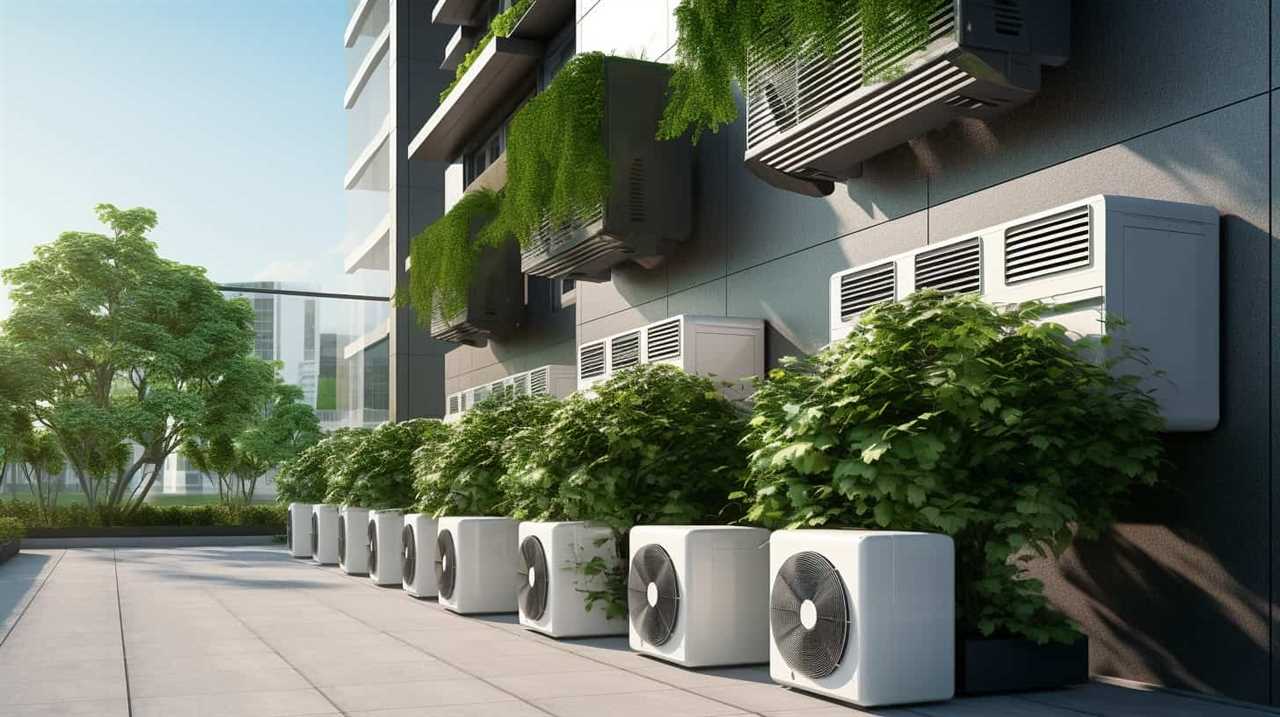
In fact, studies have shown that these systems can reduce energy consumption by up to 50%.
This means that not only will we enjoy a more comfortable living space, but we’ll also contribute to a more sustainable future by reducing our carbon footprint.
Geothermal Heat Pumps
Comparing Heat Pump Efficiency in Sustainable Buildings

In this article, we will explore sustainable buildings and analyze the effectiveness of heat pumps.
We will explore the factors that affect heat pump efficiency, the different types of heat pump systems available for green buildings, and the energy efficiency ratings for these systems in sustainable construction.
By analyzing the performance of heat pumps in green buildings, we aim to provide you with the best practices for optimizing heat pump efficiency in sustainable construction.
Get ready to master the art of comparing heat pump efficiency in sustainable buildings!
Key Takeaways
- Availability of incentives for heat pumps can play a significant role in promoting their usage in sustainable buildings.
- The impact of climate on heat pump efficiency highlights the need for careful consideration of local climate conditions when choosing a heat pump system.
- The importance of insulation in maximizing heat pump efficiency emphasizes the need for proper insulation in sustainable buildings.
- Regular maintenance is crucial for sustaining heat pump efficiency and ensuring optimal performance over time.
Factors Affecting Heat Pump Efficiency in Sustainable Buildings
In our research, we’ve identified several key factors that affect the efficiency of heat pumps in sustainable buildings.
One of these factors is the availability of incentives for heat pumps. Governments and organizations around the world are recognizing the importance of transitioning to more sustainable energy sources, and as a result, they’re offering various incentives to promote the adoption of heat pumps. These incentives can include tax credits, grants, and rebates, which can significantly reduce the upfront costs of installing a heat pump system.
Another factor that affects heat pump efficiency is the climate in which they’re installed. Heat pumps work by extracting heat from the air or ground, and the efficiency of this process is influenced by the temperature and humidity levels. In colder climates, where temperatures drop below freezing, heat pump efficiency may decrease, requiring additional energy to maintain desired indoor temperatures. Therefore, it’s crucial to consider the impact of climate on heat pump efficiency when designing and operating sustainable buildings.
Types of Heat Pump Systems for Green Buildings
When considering heat pump systems for green buildings, we must evaluate the different types available to determine the most suitable option. Two common types of heat pump systems for green buildings are geothermal heat pumps and air source heat pumps.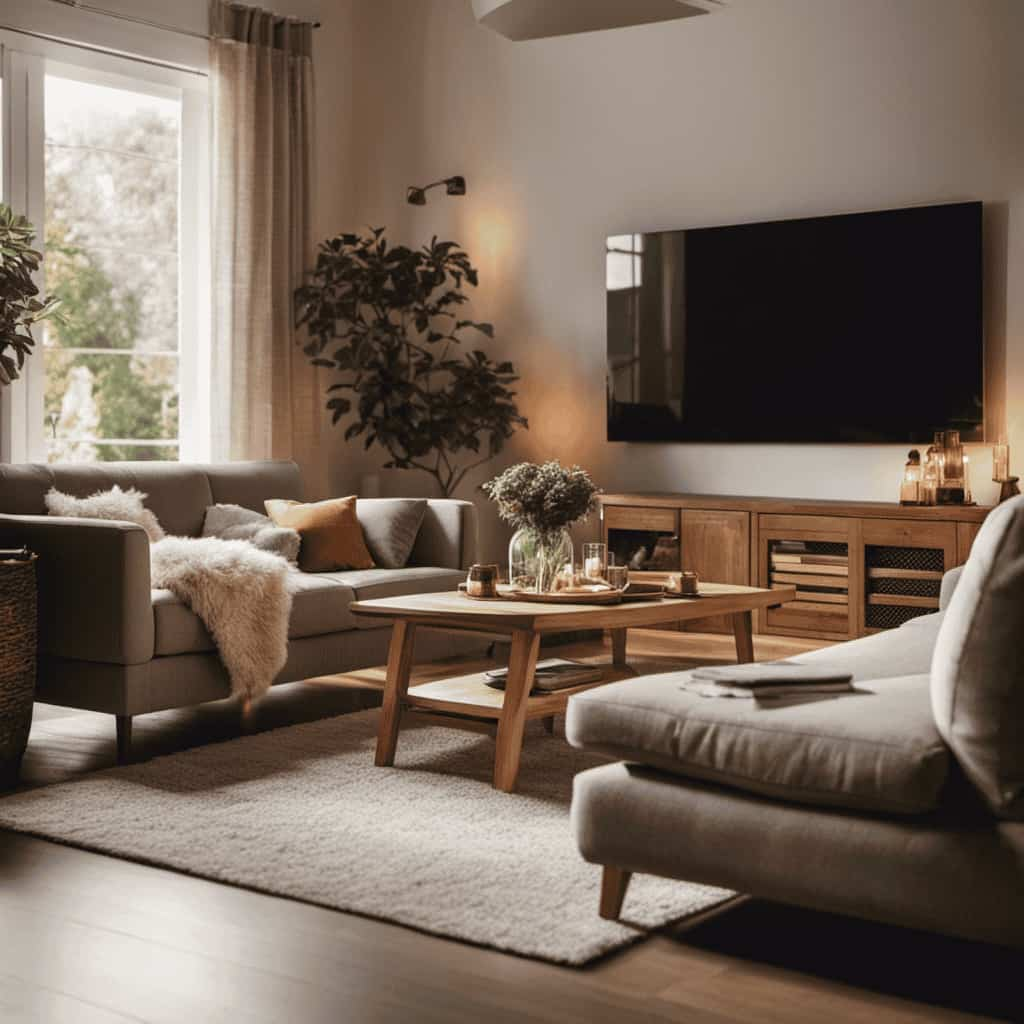
Geothermal heat pumps use the stable temperature of the ground or water as a heat source or sink. They achieve high efficiency by utilizing the relatively constant temperatures available underground. Geothermal heat pumps can provide both heating and cooling, making them versatile for various climates.
On the other hand, air source heat pumps extract heat from the outdoor air and transfer it indoors. They’re easier to install and require less space compared to geothermal heat pumps. However, their efficiency may vary depending on the outdoor temperature.
Both geothermal and air source heat pumps offer energy-efficient solutions for green buildings. The choice between the two depends on factors such as available space, local climate, and budget considerations.
Energy Efficiency Ratings for Heat Pumps in Sustainable Construction
For our evaluation of heat pump efficiency in sustainable construction, we’ll analyze the energy efficiency ratings of different heat pump systems. Energy efficiency ratings provide essential information about the performance of heat pumps and their ability to save energy. These ratings are determined by industry standards and are based on the ratio of heat output to electricity input.
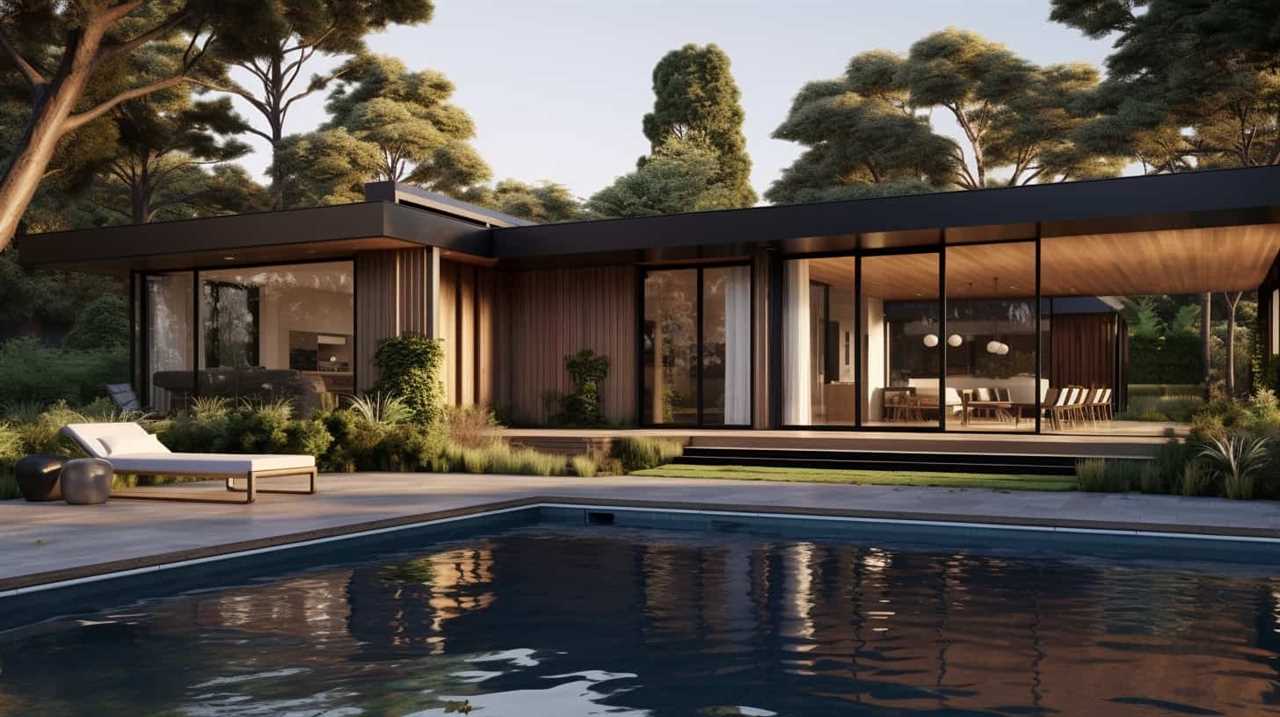
The higher the rating, the more efficient the heat pump is in converting energy into heat. Energy-saving technologies incorporated into heat pumps, such as variable-speed compressors and smart controls, can further enhance their efficiency.
Comparing the Performance of Heat Pumps in Green Buildings
We will assess and compare the performance of heat pumps in green buildings to determine their effectiveness in providing efficient heating and cooling solutions. A comparison of heat pump performance in green buildings can help us understand the benefits of using these systems in sustainable construction. To facilitate this comparison, we have created a table that highlights the key performance metrics of different heat pump models in green buildings. This data-driven approach allows us to analyze the efficiency, energy consumption, and environmental impact of each heat pump. By examining these factors, we can identify the most effective heat pump solutions for sustainable construction projects. Transitioning into the next section, we will now explore best practices for optimizing heat pump efficiency in sustainable construction.
| Heat Pump Model | Efficiency (COP) | Energy Consumption (kW) | Environmental Impact (CO2 emissions) |
|---|---|---|---|
| Model A | 4.5 | 8.2 | 2.5 tons |
| Model B | 3.8 | 9.6 | 3.1 tons |
| Model C | 5.2 | 7.5 | 2.2 tons |
| Model D | 4.2 | 8.8 | 2.8 tons |
| Model E | 4.8 | 7.9 | 2.4 tons |
Best Practices for Optimizing Heat Pump Efficiency in Sustainable Construction
To maximize heat pump efficiency in sustainable construction, we recommend implementing proper insulation and regular maintenance. These best practices can significantly improve the performance and energy efficiency of heat pumps, leading to reduced energy consumption and lower greenhouse gas emissions.
Here are three key strategies for optimizing heat pump efficiency:
-
Optimizing insulation: Ensuring that the building envelope is well-insulated helps minimize heat loss and maintain a consistent indoor temperature. This reduces the workload on the heat pump, allowing it to operate more efficiently.
-
Renewable energy integration: Pairing heat pumps with renewable energy sources, such as solar panels or geothermal systems, can further enhance their efficiency. By utilizing clean and sustainable energy, heat pumps can operate at higher COP (Coefficient of Performance) values, resulting in greater energy savings.
-
Regular maintenance: Conducting routine maintenance, including filter cleaning, refrigerant checks, and system inspections, is crucial for maintaining optimal heat pump performance. Regular maintenance helps identify and address any issues promptly, preventing energy inefficiencies and potential breakdowns.
Frequently Asked Questions
How Are Heat Pumps Different From Traditional Heating and Cooling Systems?
Heat pumps differ from traditional heating and cooling systems by utilizing the heat transfer process to efficiently heat or cool a space. This results in lower energy consumption and higher efficiency compared to conventional systems.
What Are the Environmental Benefits of Using Heat Pumps in Sustainable Buildings?
Using heat pumps in sustainable buildings offers numerous advantages. They have a positive impact on the environment by reducing greenhouse gas emissions, improving energy efficiency, and promoting renewable energy sources.
Are There Any Financial Incentives Available for Installing Heat Pumps in Green Buildings?
Financial incentives are available for installing heat pumps in green buildings, which can help offset the installation costs. These incentives can include tax credits, rebates, and grants, making heat pump adoption a more financially viable option for sustainable building projects.
Can Heat Pumps Be Used in All Types of Sustainable Buildings, Regardless of Size or Design?
Heat pump compatibility varies in different sustainable buildings, regardless of size or design. However, implementing heat pumps can lead to significant energy savings, making them a viable option for many green buildings.
What Maintenance and Care Is Required for Heat Pumps to Ensure Optimal Efficiency in Sustainable Construction?
To ensure optimal efficiency in sustainable construction, heat pump maintenance is crucial. Regularly cleaning or replacing air filters, checking refrigerant levels, and inspecting coils are essential tasks. Neglecting maintenance can lead to decreased energy efficiency and higher operating costs.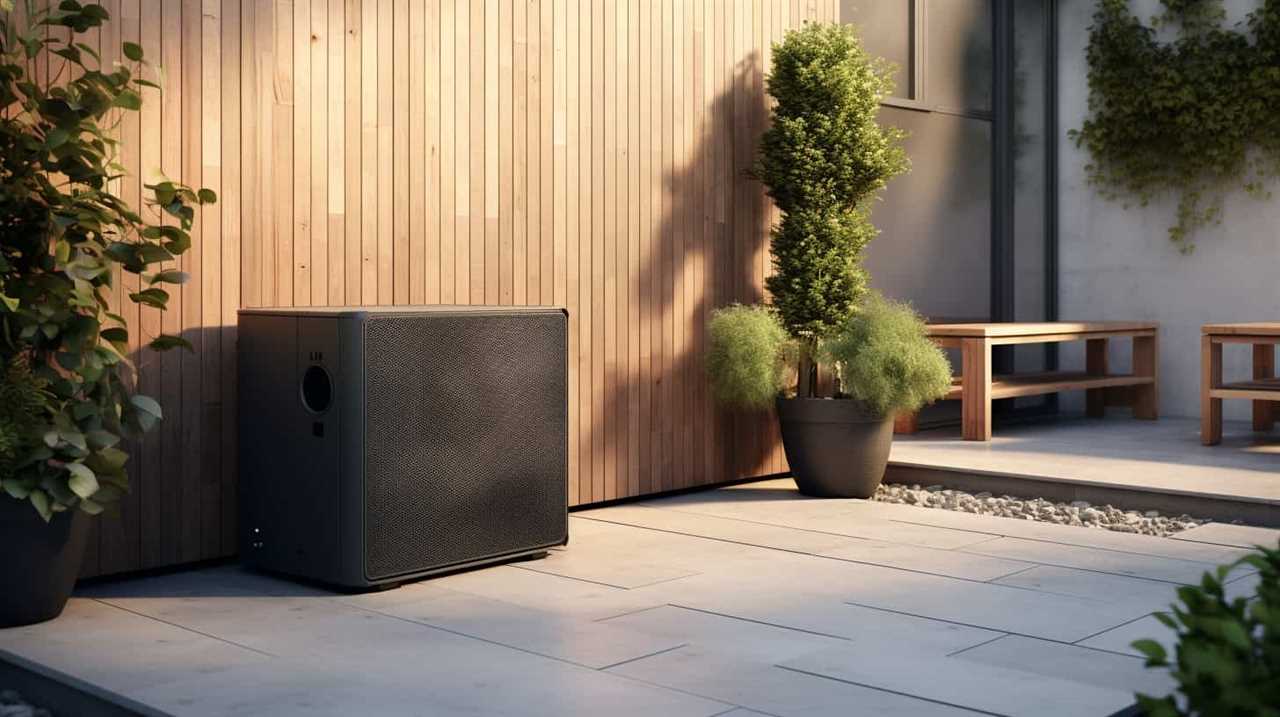
Conclusion
In conclusion, when it comes to heat pump efficiency in sustainable buildings, careful consideration of factors such as insulation, system type, and energy ratings is crucial. By optimizing these aspects, we can achieve significant energy savings and reduce carbon emissions.
For example, a study conducted in a green building with an efficient heat pump system showed a 30% reduction in energy consumption compared to traditional heating methods.
Just like a well-conducted symphony, the harmonious combination of these factors can create a sustainable rhythm for our planet’s future.
-

 Residential and Commercial Applications2 weeks ago
Residential and Commercial Applications2 weeks agoBest Amana Heat Pump Reviews
-

 Thermal Energy Transfer2 weeks ago
Thermal Energy Transfer2 weeks agoBreakthroughs in Modern Heat Pump Systems: Thermal Energy Edition
-

 Residential and Commercial Applications2 weeks ago
Residential and Commercial Applications2 weeks agoBest Heat Pump
-
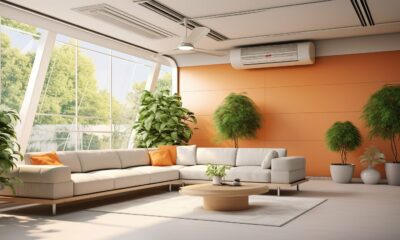
 Geothermal Heat Pumps3 months ago
Geothermal Heat Pumps3 months agoUpgrade Your Comfort with Our Efficient HVAC Systems
-

 Air Conditioning3 months ago
Air Conditioning3 months agoExploring Energy-Efficient Air Conditioning Heat Pumps
-

 Geothermal Heat Pumps3 months ago
Geothermal Heat Pumps3 months agoInnovative Geothermal Heat Pump Manufacturers Revolutionize Energy Efficiency
-

 Thermal Energy Transfer1 month ago
Thermal Energy Transfer1 month agoBoost Your Heat Pump Efficiency: Interactive Guide
-

 Residential and Commercial Applications2 weeks ago
Residential and Commercial Applications2 weeks agoBest Portable Heat Pump Heat & AC










